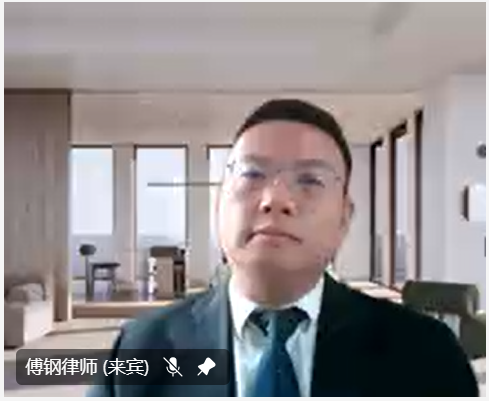On December 27, the Quality Brands Protection Committee of the China Association of Enterprises with Foreign Investment (QBPC) Legal Committee hosted a seminar on hot topics of Anti-Unfair Competition Law, and three lawyers made presentations. CHEN Xi, Legal Committee Vice Chair, presided over the seminar, which was attended online by over 100 QBPC members.

Chen Xi
Yin Lamei, Associate Professor of East China University of Political Science and Law, discussed the issue of product model related to the Anti-Unfair Competition Law. She first explained the revision of the confusing clause in Article 6 of the Anti-Unfair Competition Law, the judicial interpretation, and the evolution of the relevant norms at the legislative level, the regulatory basis for product model protection under the Anti-Unfair Competition Law. She further pointed out that the distinctiveness of a product model was an essential condition for protection under the Anti-Unfair Competition Law, and that the scope of protection should be limited by the principle of non-confusion. Furthermore she cited several relevant domestic and overseas cases, covering a wide range of industries such as low-voltage electrical appliances, water treatment equipment, poker cards, and automobiles (Audi v. NIO). Based on the cases, she summarized three factors, namely., certain impact, likelihood of confusion, and legitimacy of the act, with a particular emphasis on business use in the setting of mandatory registration requirements for the industry, where mandatory registration requirements, the size of the naming space, the production capacity of the enterprise, and many other factors would have a significant impact on the outcome of the determination.

Yin Lamei
FU Gang, Deputy Director of the Shanghai Bar Association IP Committee, analyzed the competition law regulatory issues involved in malicious complaints and litigations related to IP. After explaining in detail the basic concepts of malicious complaints and litigations and their related legal provisions, he advocated that all complaints and civil litigations for the protection of rights should follow the principle of good faith while preventing abuse of power. Following that, he detailed the principles of regulation of malicious complaints and litigations under the framework of competition law, which mainly included four major elements: competitive relationship, subjective intent, unfair competition behavior, and assigned result. He emphasized that subjective intent refered to the malice of defendant, and the court's judgment might consider the following four factors: the basis of the actor's rights and cognitive ability, whether the plantiff had a factual basis for initiating a lawsuit, the legitimacy of the plantiff's litigation behavior, and the type of rights targeted by the lawsuit. Finally, FU Gang summarized the ways of assuming responsibility for malicious complaints and lawsuits, and he believed that the exact amount of economic loss could be proved by comparing sales changes before and after the removal of commodity links, and the right holder might need to invest a large amount of promotional expenses in re-listing or restoring the ranking.

FU Gang
Sun Jiange, Managing Partner of Shanghai Kaizheng Law Firm, analyzed the conflict between corporate logos and trademark rights, using the case of Siemens v. Qishuai IPR Infringement as an example. The case was the first of its sort to result in a legitimate ruling by the Supreme Court, which determined that Siemens had exclusive rights to the name or trademark and fully supported a compensation of up to RMB 100 million. When discussing how to identify infringement, he proposed several important factors: first, the right holder should focus on the reputation and influence of the brand; second, the right holder should carefully analyze the main purpose of the act to clarify whether it was intentional or had other justifiable reasons; and third, the right holder should consider whether the act might cause confusion. In addition, he underlined the importance of the chain of evidence including consumer complaints, product images, and other information that could be used as solid evidence. Finally, the case raised the issue of brand contribution ratio, which was closely linked to brand strategy, prominence, and actual value. Other considerations included the technical content of the goods involved, the completeness of the production technology, the complexity of the process, and whether the technology and process contributed significantly to the profit of the product.

Sun Jiange
In the Q&A session, the speakers responded to the questions raised by the participants, such as the judgment criteria and impact of trademark infringement cases, legal litigation strategies for product plagiarism and infringement as well as the distinction between bulk litigation and malicious litigation.
